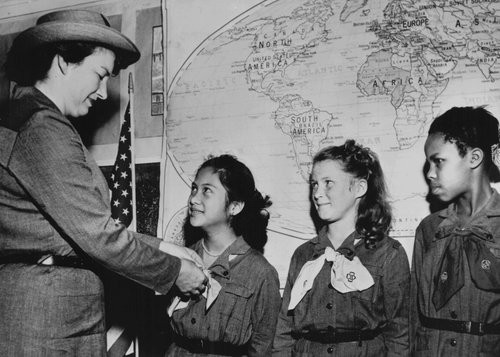The world of Girl Guides and Girl Scouts can be a fascinating one. For over a century, this global movement has empowered young women to become leaders, serve their communities, and advocate for a better world. This guide aims to provide a boy’s perspective on what Girl Guides and Girl Scouts are all about.
The Origins of Girl Guiding and Girl Scouting
In 1909, girls attending a Boy Scout rally in the UK declared themselves “Girl Scouts.” Recognizing the need for a similar program for girls, Lord Robert Baden-Powell, the founder of Boy Scouts, initiated the Girl Guide movement.
That same year, Girl Guiding began, designed to address the specific needs and interests of girls and young women. Quickly, Girl Guide groups sprung up in countries like Australia, Canada, Denmark, Finland, New Zealand, and South Africa.
The Girl Guide Association was officially established in the UK in 1910, led by Agnes Baden-Powell, Robert’s sister. By 1912, the movement had spread to Ireland, Portugal, Norway, and the USA, where Juliette Low founded Girl Scouting.
Today, Girl Guide or Girl Scout Associations thrive in 150 countries worldwide, making it a truly global force.
The World Association of Girl Guides and Girl Scouts (WAGGGS)
 1950s_Olave_Girls
1950s_Olave_Girls
Olave Baden-Powell with Girl Guides in the 1950s, promoting leadership and international cooperation.
The First World Conference, held in England in 1920, marked a pivotal moment. Representatives from Girl Guiding and Girl Scouting organizations worldwide gathered to share ideas and experiences. This event not only strengthened the international scouting and guiding community but also raised the movement’s global profile.
As international collaboration grew, the idea of forming a formal world association gained momentum. In 1928, delegates from 26 countries met in Hungary and established the World Association of Girl Guides and Girl Scouts (WAGGGS). WAGGGS provides a framework for cooperation and shared goals within the movement. A World Bureau was established in London as its secretariat, replacing the advisory International Council created in 1919.
The newly formed World Association elected a World Committee, including Lord and Lady Baden-Powell, and the Director of the World Bureau. World Conferences, held every three years, remain a vital platform for policy and decision-making within WAGGGS.
The First World Conference laid the foundation for the global Girl Guiding and Girl Scouting movement, fostering a shared vision and shaping its future – a legacy that endures to this day.
A Timeline of Key Moments
-
1907: Lord Robert Baden-Powell organizes the first Boy Scout camp in the United Kingdom.
-
1908: Baden-Powell publishes “Scouting for Boys,” inspiring countless boys to join the Scouting movement.
-
1909: Girls attend the Boy Scout rally and identify as Girl Scouts, prompting the inclusion of girls in the Movement.
-
1910: The Girl Guides movement is formally founded by Baden-Powell and his sister, Agnes Baden-Powell.
-
1912: Juliette ‘Daisy’ Gordon Low founds Girl Guiding in the USA, emphasizing the importance of physical, mental, and spiritual development for girls.
-
1919: The International Council is formed, later becoming the International Conference.
-
1926: World Thinking Day is launched at the Fourth International Conference.
-
1928: WAGGGS is formed at the Fifth International Conference in Hungary, with 26 founding member countries.
-
1931: WAGGGS reaches one million members worldwide.
-
1932: The first WAGGGS World Centre, Our Chalet, officially opens in Switzerland.
-
1941: Lord Robert Baden-Powell passes away. His wife, Olave Baden-Powell, continues to lead the Movement as Chief Guide.
-
1957: The second WAGGGS World Centre, Our Cabaña in Cuernavaca, Mexico, opens.
-
1966: The third World Centre, Sangam, opens in India.
-
1985: The World Bureau officially opens in London, UK.
-
1991: Pax Lodge World Centre opens in London, UK.
-
2010-2012: WAGGGS celebrates the centenary of international Girl Guiding and Girl Scouting.
-
2011: The WAGGGS Global Advocacy Campaign, ‘Stop the Violence – Speak out for girls’ rights’ is launched.
What Does This Mean for Boys?
Understanding the Girl Guide and Girl Scout movement is about more than just knowing its history. It’s about recognizing the value of female leadership, community involvement, and global citizenship. By understanding the goals and values of these organizations, boys can become better allies and supporters of the girls and women in their lives. It is also important to understand that girls are participating in activities that help them develop into strong, confident individuals who are committed to making a difference in the world. Recognizing this can help foster respect and understanding between boys and girls.